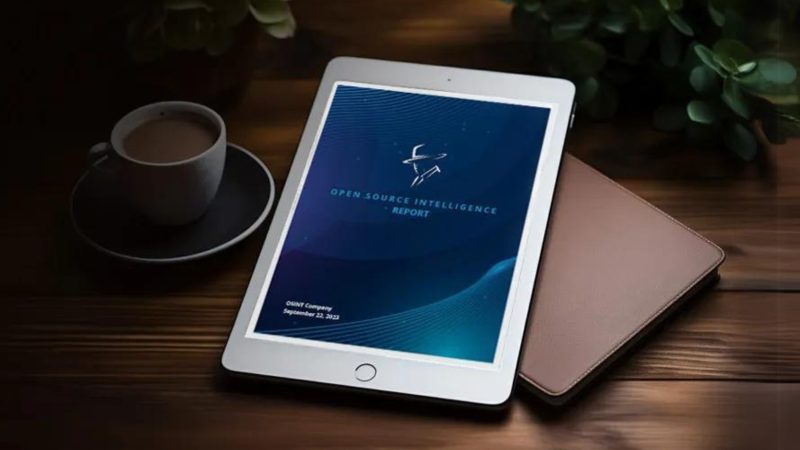Master OSINT Reports: 5 Expert Tips for Effective Reports
Whether you’re a seasoned analyst or just starting out, developing effective reports is crucial for anyone working in OSINT.
In honor of our first report-style scenario, Project Sandshark, we’re sharing five key tips to refine your OSINT reporting skills:
1. BLUF Statements
Start your reports with a Bottom Line Up Front (BLUF) Statement. The BLUF statement is a concise summary at the beginning of your report that shares key findings and conclusions.
This lets readers get essential insights upfront, which helps comprehension and efficiency.
BLUF Statement Example:
“After conducting extensive OSINT analysis, it is evident that Company X poses a high cybersecurity risk due to its lax data encryption practices. Immediate action is recommended to strengthen cybersecurity measures and mitigate potential breaches.”
2. Structure Ideas to Tell a Story
In the body of the report, organize your report to tell a story and guide readers through the information smoothly.
To do this, begin with an introduction that outlines the purpose of the investigation and objectives, present a timeline of events, and conclude with a summary with actionable recommendations.
Pro tip: Use transitional phrases throughout the report. As we said, linking all the data together helps the reader understand the situation.
3. Write for Your Audience
Reports are not one-size-fits-all. Be sure to tailor your report to your audience’s needs and level of expertise.
Ask yourself: What is the perspective and knowledge of the readers?
How you would convey information to technical experts is not necessarily how you would convey information to policymakers.
We recommend adjusting your tone, level of detail, and technical jargon accordingly.
4. Save Sources and Maintain Transparency
It’s crucial to document your sources and maintain transparency in your reports. This helps verify findings and makes it easier for others to replicate your research process.
Be sure to note where you gathered your information, such as URLs, timestamps, relevant metadata, etc.
A tool we highly recommend is the Forensic OSINT Professional Chrome Extension. This Chrome Extension is designed to capture and preserve every crucial moment of your investigation.
(We’re such fans of Forensic OSINT that we partnered with them to give Project Sandshark students six weeks of Forensic OSINT Professional for FREE!)
5. Use Visuals to Enhance Understanding
Visual representations of data can make complex information easier to understand.
Try incorporating visuals like charts, graphics, and maps.
Bottom Line
By implementing these five tips, you can elevate your OSINT reporting skills and show your value in the workplace!
Ready to put these strategies into action? Dive into Project Sandshark to refine your report-writing skills in a realistic scenario environment.
Kase Scenarios provides hands-on, practical, online OSINT training where you can safely practice the concepts talked about in this article. Through our immersive OSINT scenarios you will get a feel for what it might be like to work on a real case and what it’s like working for a stakeholder, or case lead, who will give you information requests like the ones I’ve covered here. OSINT is more than just classroom training, it’s a practical field that require practical training. Start your OSINT training with Kase Scenarios today!





No Comment